IELTS Writing Task 1 Bar Chart: Graduation
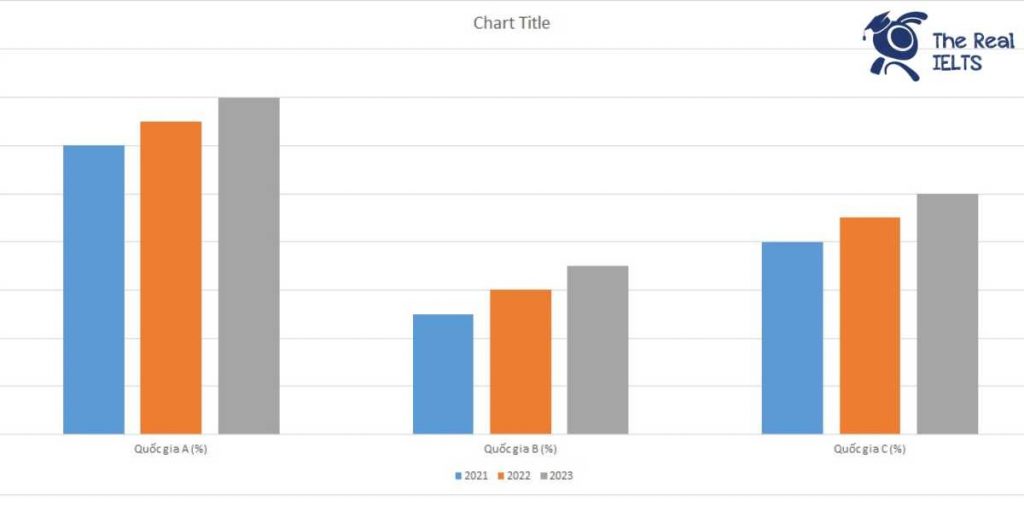

IELTS Writing Task 1 yêu cầu bạn mô tả và phân tích biểu đồ. Ví dụ, bạn có thể nhận thấy biểu đồ Bar Chart thể hiện tỷ lệ tốt nghiệp của học sinh ở ba quốc gia khác nhau trong ba năm khác nhau.
IELTS Writing Task 1 Bar Chart: Motorcycles Sold
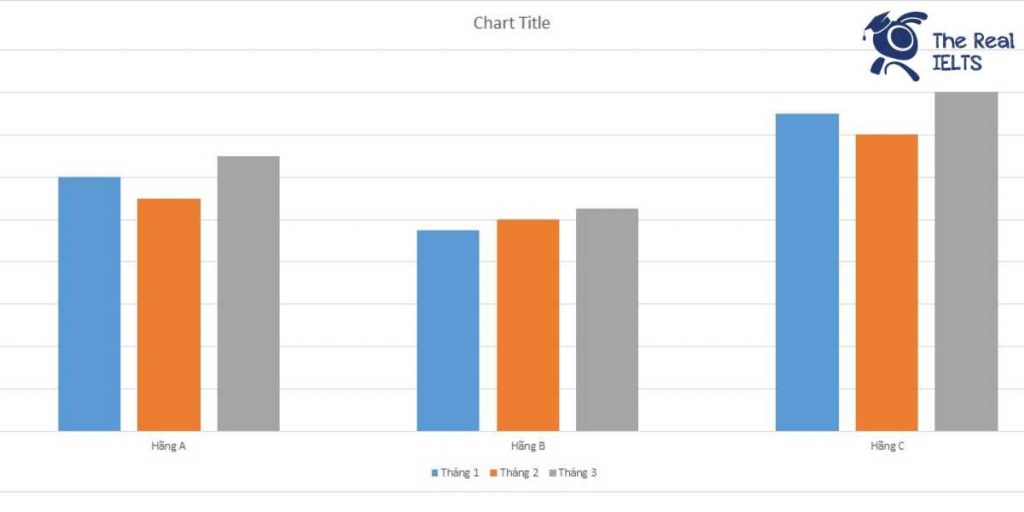

IELTS Writing Task 1 yêu cầu mô tả biểu đồ Bar Chart thể hiện số lượng xe máy bán ra trong ba tháng từ ba hãng khác nhau. Bài viết cần trình bày rõ ràng và chính xác các số liệu, so sánh sự khác biệt giữa các hãng, và phân tích xu hướng bán hàng trong từng tháng. Người viết nên sử dụng từ vựng phong phú và cấu trúc ngữ pháp đa dạng để đạt điểm cao. Đọc bài này Cách làm bài IELTS Writing Task 1 Bar Chart trước khi làm bài. Bạn cũng có thể đọc lại bài nói về Task 1 tại đây: IELTS Writing Task 1 cần lưu ý những gì? Đọc thêm về xây dựng lộ trình học IELTS của The Real IELTS. IELTS Writing Task 1 Bar Chart: Motorcycles Sold You should spent about 20 mintutes on this task IELTS Writing Task 1 requires describing a Bar Chart showing the number of motorcycles sold over three months by three different companies. The essay should present the data clearly and accurately, compare the differences between the companies, and analyze the sales trends for each month. The writer should use rich vocabulary and varied grammatical structures to achieve a high score. You should write at least 150 words Hãng xe Tháng 1 Tháng 2 Tháng 3 Hãng A 1,200 1,100 1,300 Hãng B 950 1,000 1,050 Hãng C 1,500 1,400 1,600 Bài mẫu 1 Overview The table presents the sales data of three different motorcycle brands (A, B, and C) over the first three months of the year. It provides insights into the sales trends and performance of each brand, offering a clear comparison of their market presence during this period. Body 1 In January, Brand A sold 1,200 motorcycles, while Brand B sold 950, and Brand C led the market with 1,500 units sold. This month saw Brand C as the top performer, indicating a strong market preference for its motorcycles. Brand A also showed a significant presence, while Brand B lagged slightly behind the other two. Body 2 February’s sales figures reveal some shifts in the market dynamics. Brand A’s sales slightly decreased to 1,100 units, whereas Brand B experienced a modest increase, selling 1,000 motorcycles. Brand C, though still leading, saw a decrease to 1,400 units. This month shows a narrowing gap between the brands, with Brand B closing in on Brand A’s sales figures. Body 3 In March, all three brands experienced an increase in sales. Brand A sold 1,300 motorcycles, marking the highest sales figure for this brand in the three-month period. Brand B continued its upward trend with 1,050 units sold. Brand C maintained its lead, further increasing its sales to 1,600 motorcycles. This final month highlights Brand C’s dominance in the market, with consistent sales growth, while Brands A and B also demonstrated positive trajectories. Overall, the sales data indicates that Brand C consistently outperformed the other two brands, although all brands showed growth by the end of the three-month period. Bài mẫu 2 Overview The table provides a hypothetical statistical overview of motorcycle sales across three months (January, February, and March) for three different manufacturers: Company A, Company B, and Company C. This data helps in understanding the trends in sales performance of these companies over the first quarter of the year. Body 1 In January, Company C leads the sales with 1,500 motorcycles sold, followed by Company A with 1,200 motorcycles, and Company B with 950 motorcycles. This initial month sets the stage with Company C having a significant lead over the other two companies. Company A shows moderate performance, while Company B lags behind, indicating a potential need for marketing strategies or product improvements to catch up with competitors. Body 2 As the months progress, there are notable changes in the sales figures. In February, all companies experience a slight decline in sales except for Company B, which sees an increase to 1,000 motorcycles. Company A’s sales drop to 1,100 motorcycles, and Company C sees a decrease to 1,400 motorcycles. In March, sales rebound for all companies. Company C maintains its lead with 1,600 motorcycles, followed by Company A with 1,300 motorcycles, and Company B with 1,050 motorcycles. The data indicates a robust recovery and an upward trend in sales as the quarter concludes. Company C remains the top seller throughout the quarter, while Company A and Company B show fluctuating but generally positive trends.
IELTS Writing Task 1 Bar Chart: Mortality Rate
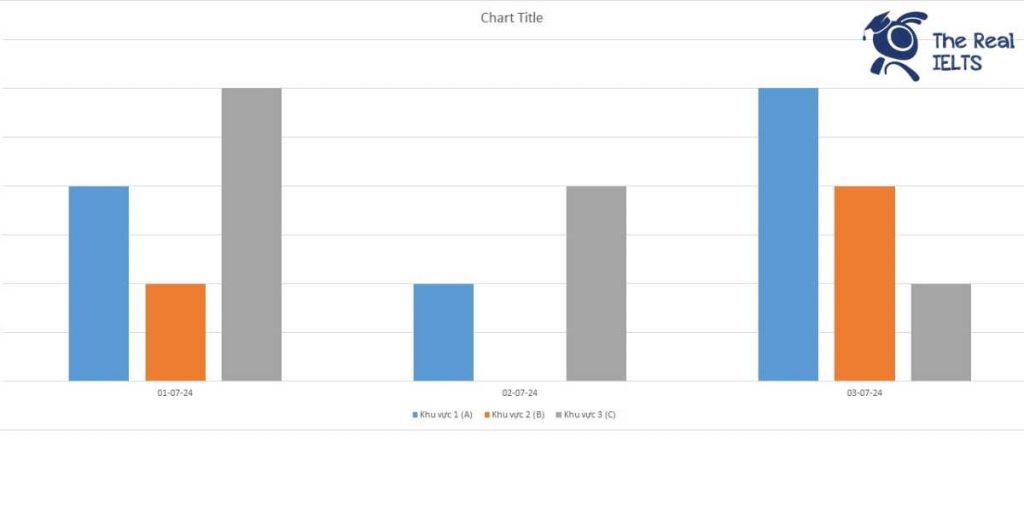

IELTS Writing Task 1 yêu cầu bạn phân tích biểu đồ cột về tỷ lệ tử vong do tai nạn giao thông trong 3 ngày tại 3 khu vực trong thành phố.
IELTS Writing Task 1 Bar Chart: Complaints
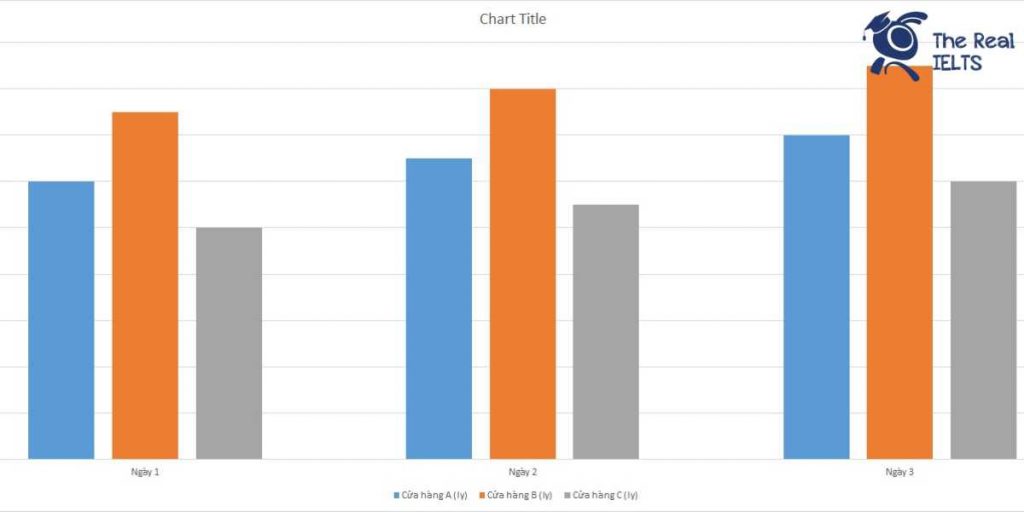

IELTS Writing Task 1 yêu cầu bạn phân tích một biểu đồ bar chart thể hiện số lượng khách hàng khiếu nại trong ba tháng tại ba công ty khác nhau. Biểu đồ này minh họa sự biến động về số lượng khiếu nại của khách hàng, giúp bạn rèn luyện kỹ năng miêu tả và so sánh dữ liệu. Khi viết, bạn cần chú ý đến việc sử dụng ngôn ngữ chính xác và cấu trúc bài viết logic để truyền đạt thông tin một cách rõ ràng và hiệu quả. Đọc bài này Cách làm bài IELTS Writing Task 1 Bar Chart trước khi làm bài. Bạn cũng có thể đọc lại bài nói về Task 1 tại đây: IELTS Writing Task 1 cần lưu ý những gì? Đọc thêm về xây dựng lộ trình học IELTS của The Real IELTS. IELTS Writing Task 1 Bar Chart: Complaints You should spent about 20 mintutes on this task IELTS Writing Task 1 requires you to analyze a bar chart illustrating the number of customer complaints over three months at three different companies. This chart depicts the fluctuations in the number of customer complaints, helping you practice descriptive and comparative data skills. When writing, you need to pay attention to using precise language and a logical structure to convey information clearly and effectively. You should write at least 150 words. Thời gian / Công ty Công ty A Công ty B Công ty C Tháng 1 25 20 30 Tháng 2 30 15 25 Tháng 3 28 18 27 Bài mẫu 1 Overview Customer complaints are a significant metric for evaluating the quality of service provided by companies. They provide insights into customer satisfaction and areas needing improvement. This report analyzes the number of customer complaints received by three companies (Company A, Company B, and Company C) over a period of three months. Body 1 In January, the number of complaints varied significantly among the three companies. Company A received 25 complaints, indicating a moderate level of customer dissatisfaction. Company B had slightly fewer complaints, with a total of 20, suggesting relatively better customer service or fewer service issues. On the other hand, Company C faced the highest number of complaints at 30, pointing to potential challenges in maintaining customer satisfaction. Body 2 The trend of customer complaints continued to fluctuate over the following two months. In February, Company A saw an increase in complaints, rising to 30, which might reflect worsening service issues or higher customer expectations. Conversely, Company B’s complaints decreased to 15, possibly indicating improvements in their service or effective resolution of previous issues. Company C experienced a decrease to 25 complaints, yet it remained higher compared to Company B, suggesting ongoing challenges. By March, the complaints for Company A slightly decreased to 28, while Company B saw a small increase to 18. Company C had 27 complaints, showing a relatively stable but high level of customer dissatisfaction compared to the others. Overall, these statistics highlight varying levels of customer service effectiveness among the three companies, with Company B generally performing better in terms of minimizing customer complaints. Bài mẫu 2 Overview This report analyzes the number of customer complaints over three months for three companies: Company A, Company B, and Company C. The data provides insights into the trends and variations in customer satisfaction levels across the companies. Body 1 In January, Company C received the highest number of complaints, totaling 30, while Company A and Company B received 25 and 20 complaints, respectively. This indicates that Company C faced more customer dissatisfaction compared to the other two companies at the beginning of the year. On the other hand, Company B had the least number of complaints, suggesting a relatively higher customer satisfaction level in January. Body 2 The trend changes slightly in February, where Company A experienced an increase in complaints, reaching 30, making it the company with the highest number of complaints for that month. Company C saw a decrease in complaints to 25, while Company B’s complaints dropped to 15, marking the lowest among the three companies. In March, Company A’s complaints slightly decreased to 28, while Company B’s complaints rose to 18. Company C’s complaints remained relatively stable, increasing slightly to 27. This month-by-month analysis highlights the dynamic nature of customer satisfaction and the need for continuous improvement in customer service across all companies.
Cấu trúc “suppose that” trong IELTS Writing
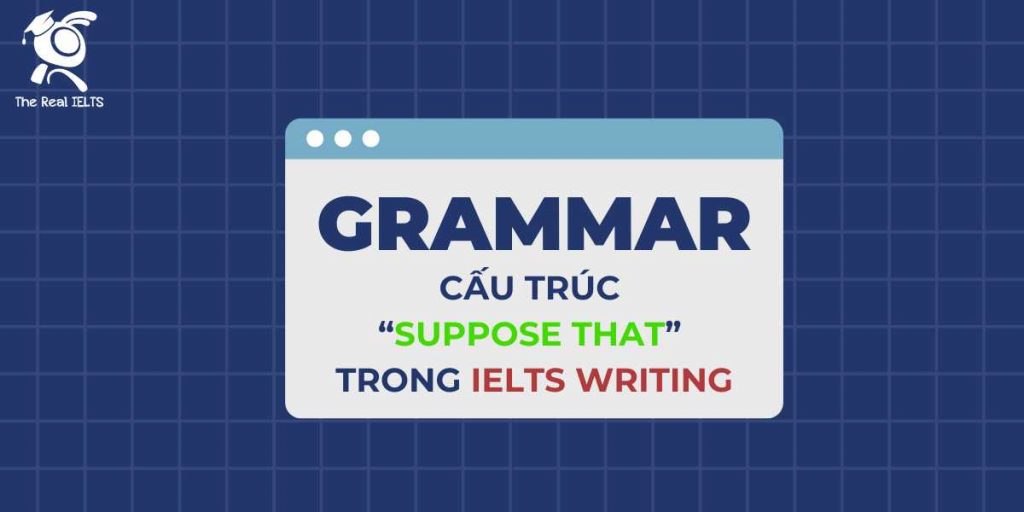

Cấu trúc hữu ích để nêu rõ điều kiện giả định là “suppose that” được sử dụng linh hoạt trong bài thi IELTS Writing.





